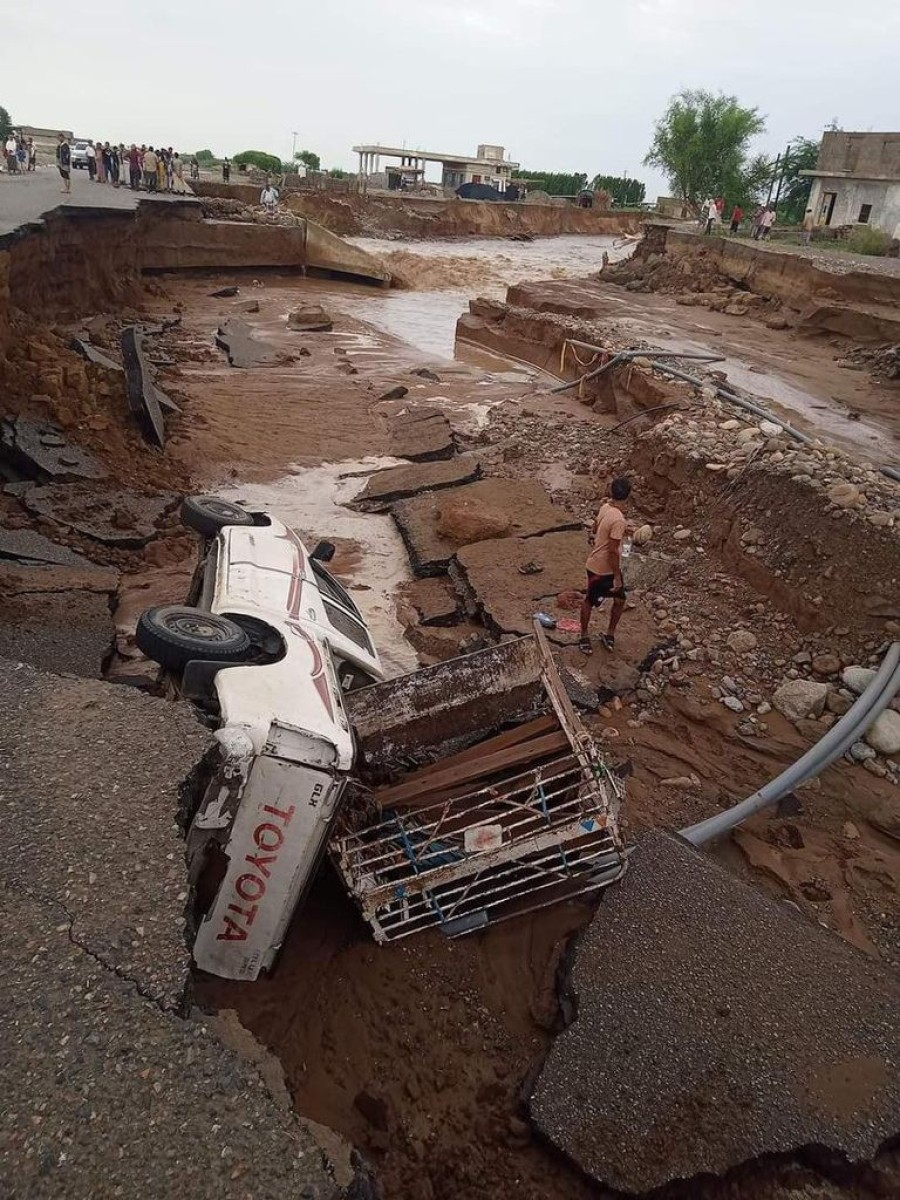Floods in Yemen.. 43 dead and missing under the rubble of houses


At least 43 people were killed, on Wednesday, in the floods that struck the governorates of Al Mahwit and Al Hodeidah, while others are still missing under the rubble of homes.
The majority of the victims occurred in the “Hamdan” and “Al-Qibla” districts in the Malhan District, west of Al-Mahwit Governorate, located 111 kilometers northwest of Sana’a, which witnessed the explosion of 3 small dams over homes, leading to the erosion of many homes and the families in them.
In the latest statistics, a source in Al Mahwit told Al Ain News that 33 people were killed as a result of at least 28 homes being swept away and destroyed in Malhan, while 5 vehicles and a large number of citizens’ farms were swept away, and the roads leading to the two affected towns were completely cut off.
According to the same source, many missing persons are still under the rubble of homes in a disaster that resulted from the flow of torrents into small dams in the middle of the mountains below which many homes were located. After its explosion, it swept away everything in its path, including homes, livestock, vehicles, and farms, as followed. The disaster caused massive rockslides, which hindered the ability to rescue missing persons.
A local committee in Al Mahwit recorded that 200 houses were partially damaged and cracked, while a two-story stone house fell on its occupants, and another whose roof collapsed in the town of “Bani Jaber” in the “Jaba” isolation in Al Khabat District.
In Hodeidah (west), at least 10 people were killed and two missing in floods and thunderbolts that have struck the governorate since Wednesday, causing sweeping torrential rains.
With new casualties, the death toll in Hodeidah only rose to about 46 dead and more than 564 injured since the beginning of this August, when the rain wave intensified, causing catastrophic floods in several governorates.
Destruction of a road in Yemen due to floods
The new victims occurred in Hodeidah in the town of “Al-Atawiyah” in the districts of Al-Zaidiyah, Al-Marawa’a, Al-Qati’, Al-Lahiyah, and Bayt Al-Faqih, while a number of houses were demolished, including houses made of mud and straw, and roads were cut off in Al-Sukhnah, Al-Duhaa, Al-Mansouriyah, and Bajil.
Activists reported the flow of torrents coming from Wadi Saham for the first time in decades to the northern entrance to the city of Hodeidah, sweeping away many homes opposite the vital port, which is classified as the second largest port on the Red Sea.
Previous losses
Devastating rains and floods hit the country hard at the end of June, worsened at the end of July and intensified in August, affecting 695,000 families directly, after their homes were destroyed and they lost their sources of livelihood and livelihoods, according to UN statistics.< /p>
Previous official and UN statistics documented the killing of 98 people, including 36 in Hodeidah, 15 in Taiz, 9 in Ibb, more than 8 in Ma’rib, and about 15 in Hajjah.
It also recorded the damage to thousands of families, the majority of whom were displaced families who suddenly found themselves homeless and displaced out in the open.
According to the early warning bulletin of the Food and Agriculture Organization of the United Nations, a significant and continuous increase in rainfall is expected in the coming days in several Yemeni governorates, including unprecedented rainfall exceeding 300 mm in the central highlands, the Red Sea coastal areas, and parts of the southern highlands.< /p>